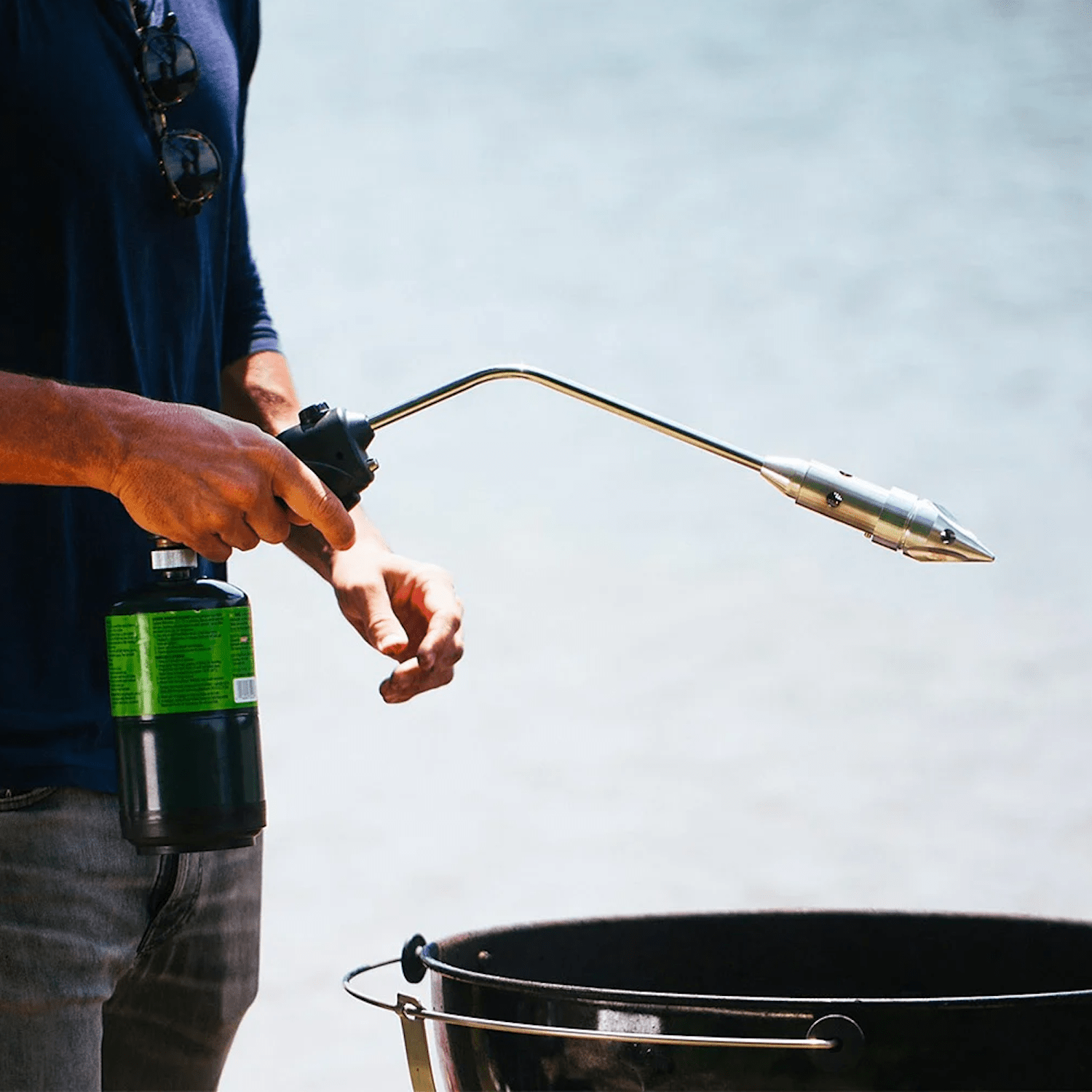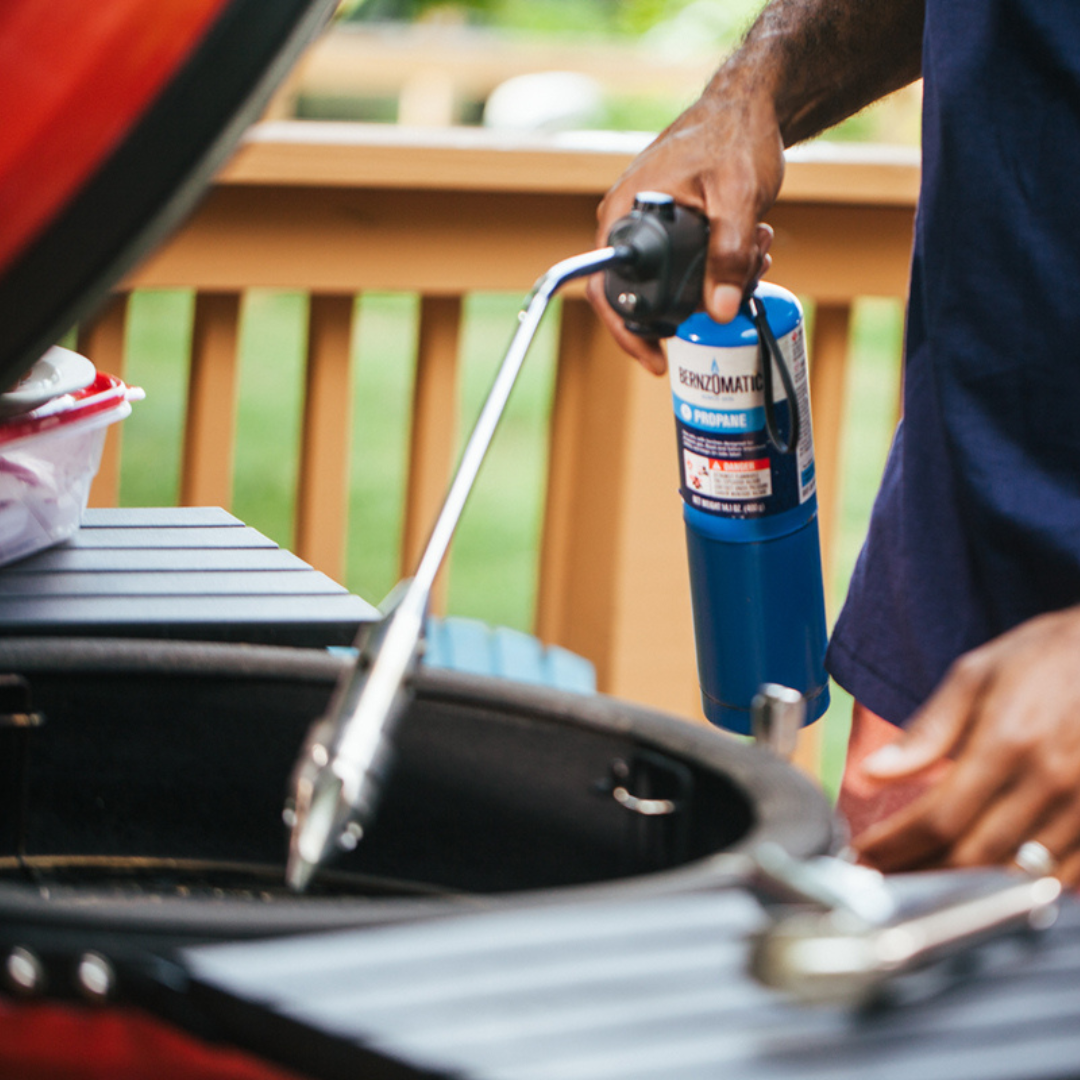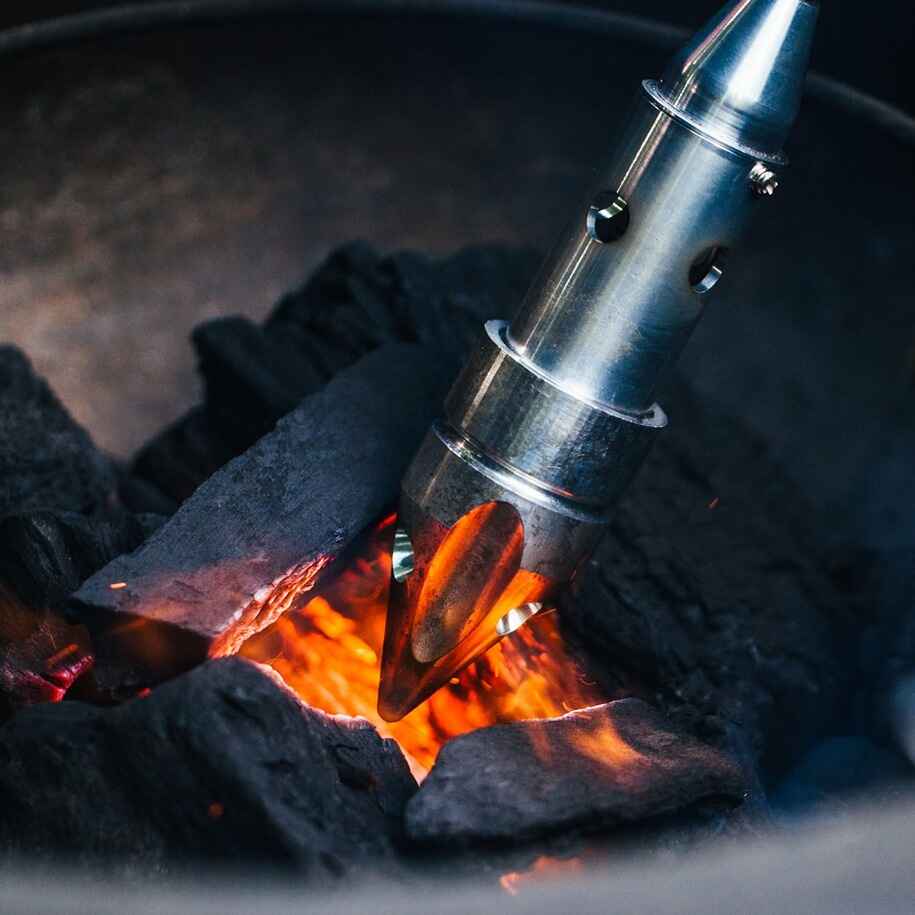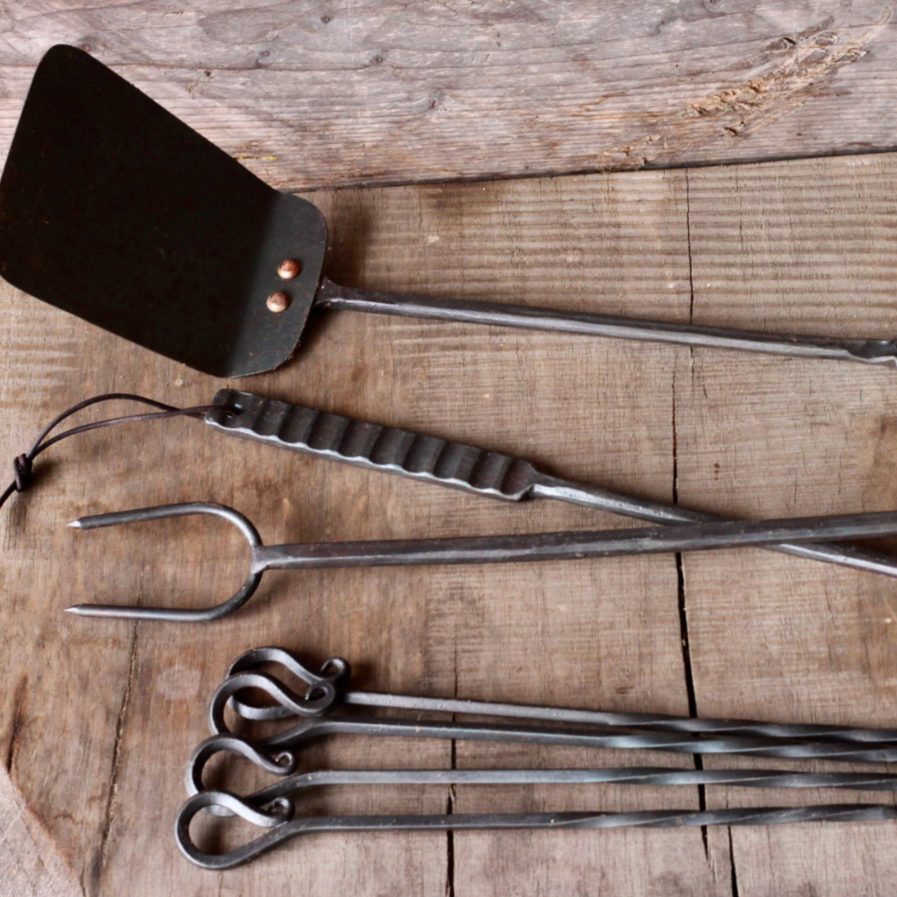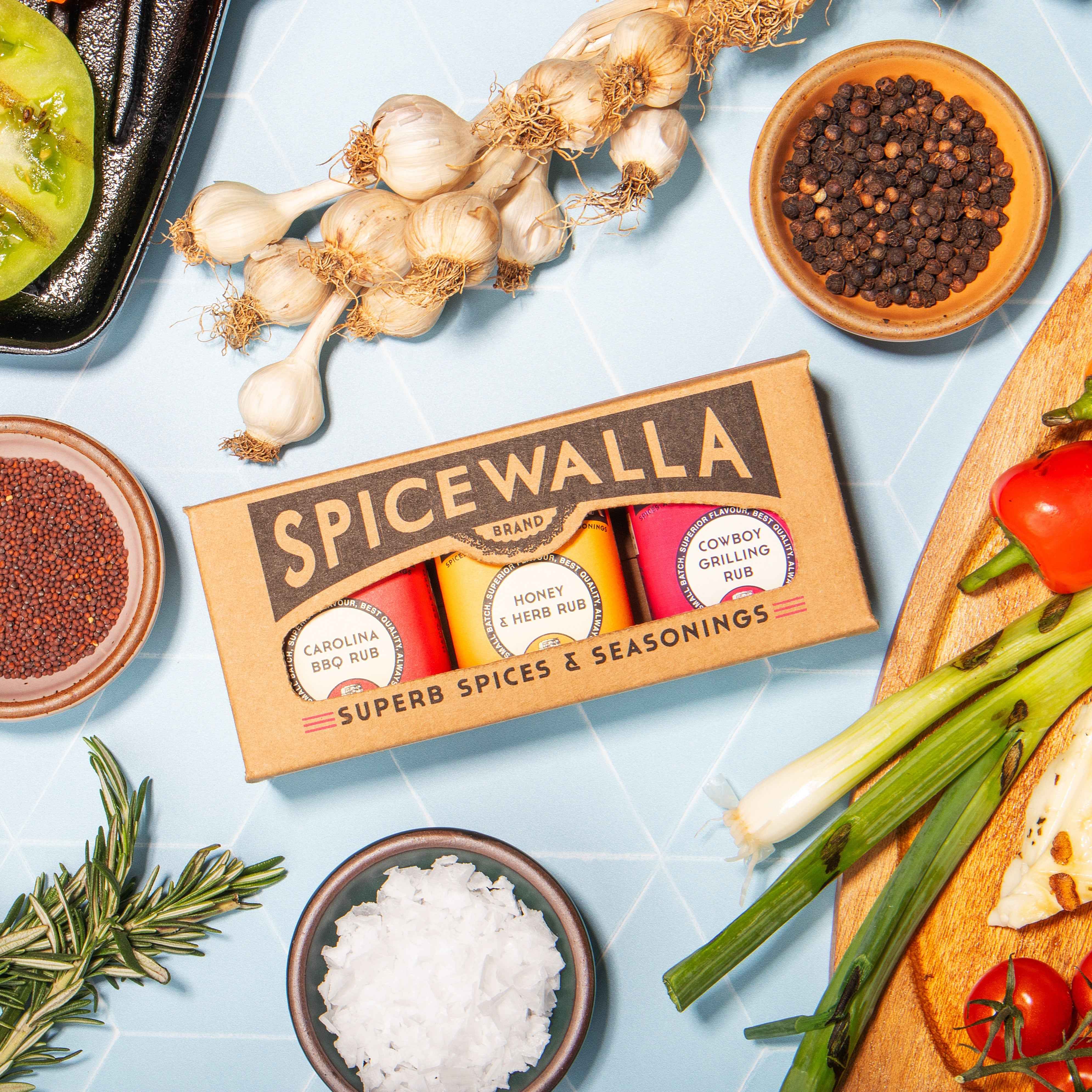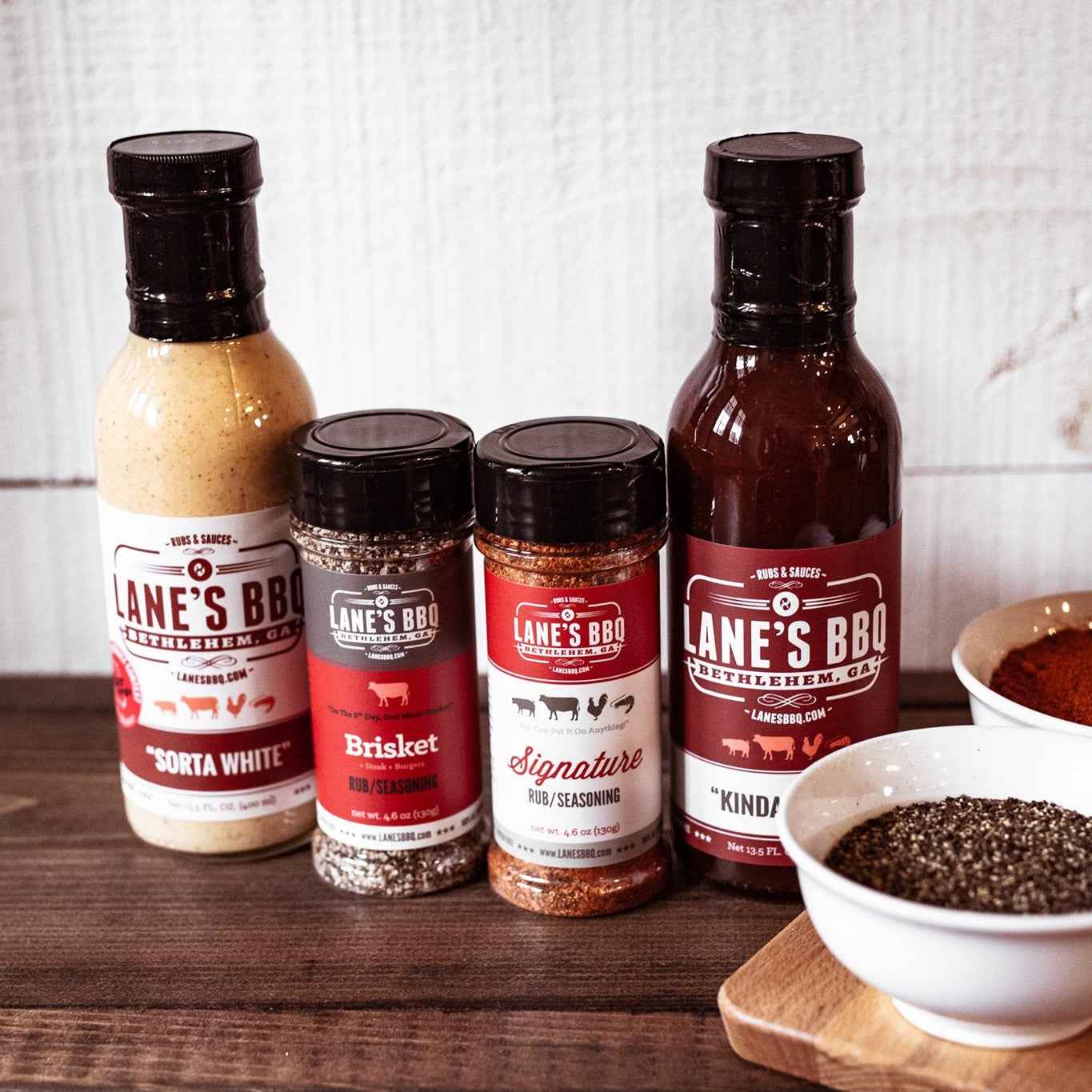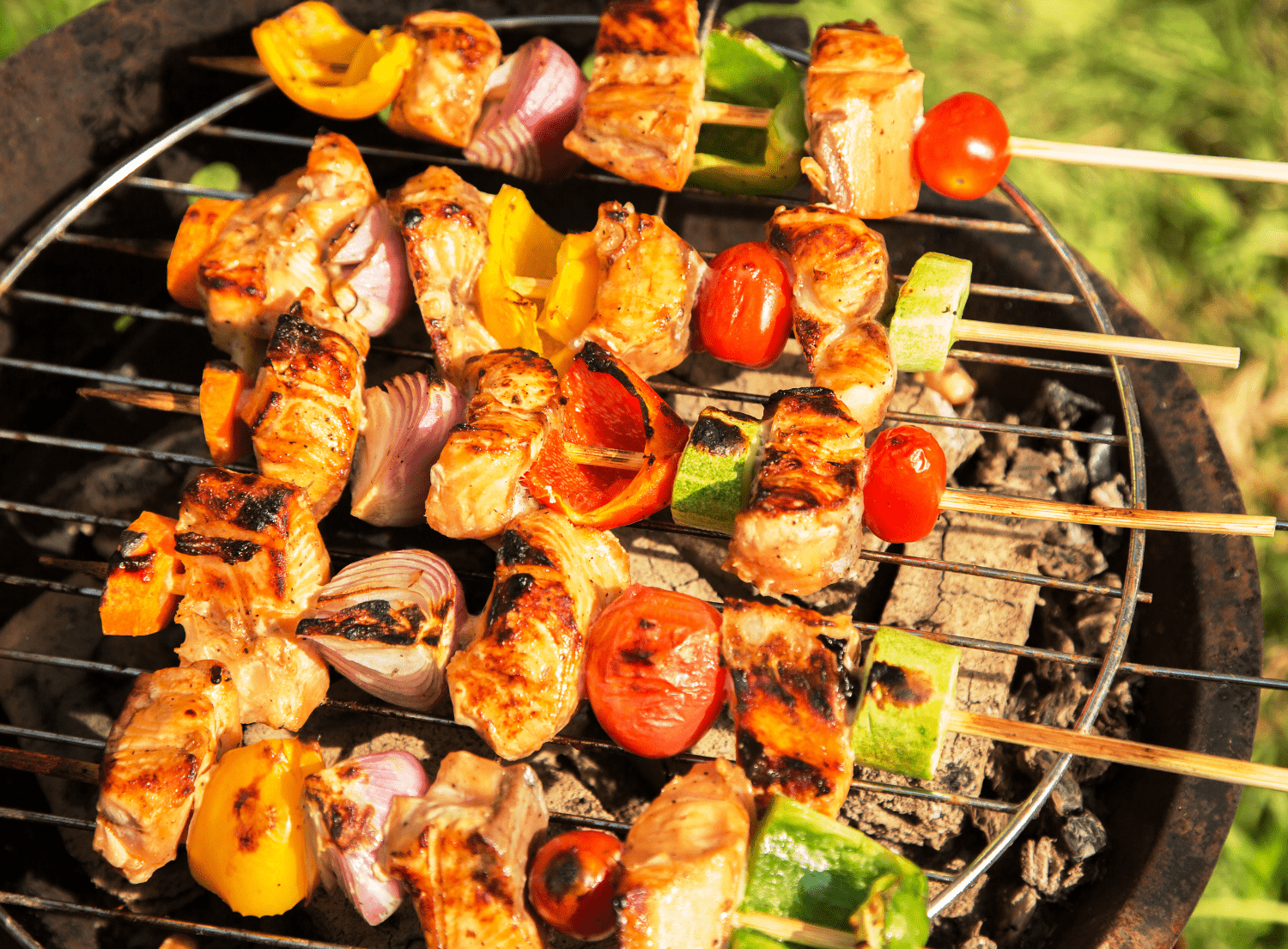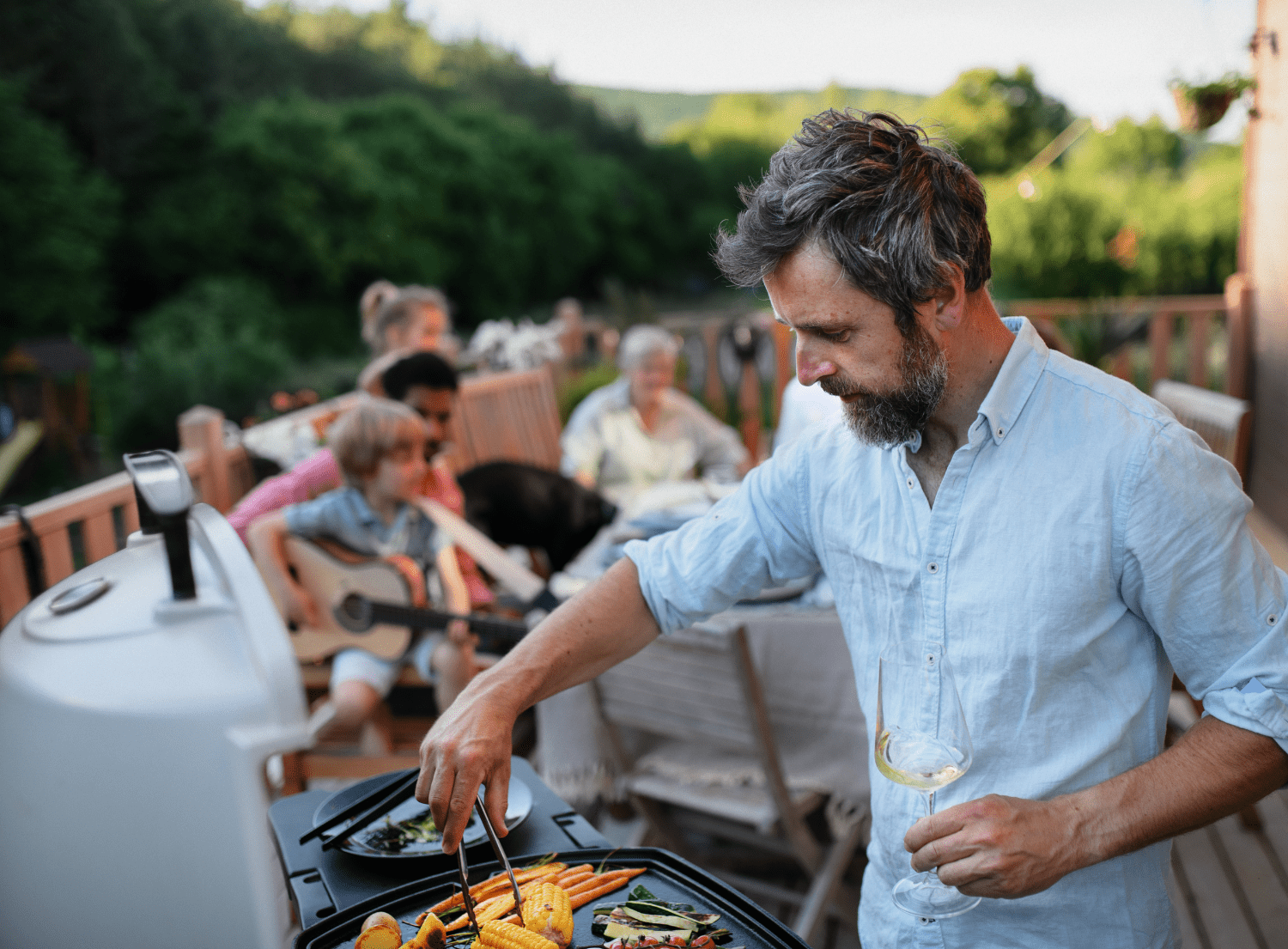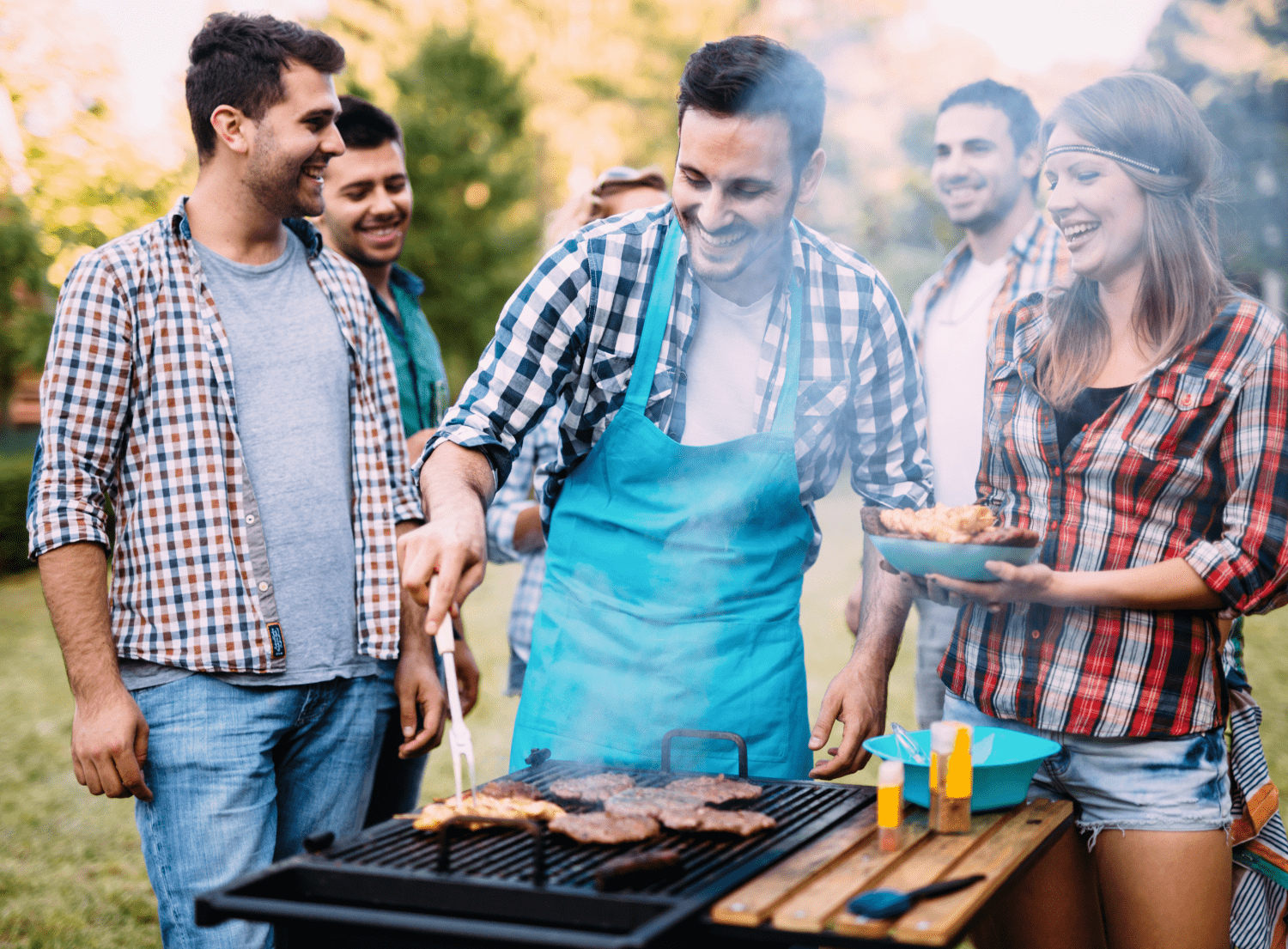For beginners, understanding the basics of charcoal grilling can seem daunting, but with a few tips and tricks, you'll be able to impress your friends and family with perfectly grilled meals.
This guide will cover everything you need to know about using a charcoal grill, from selecting the right type of charcoal to managing your grill for different cooking styles. Read on to take your cooking to the next level!
Choosing the Right Charcoal
The type of charcoal you use can significantly impact the flavor, cooking time, and overall success of your grilling endeavors. When it comes to charcoal grilling, there are two main types of charcoal: charcoal briquettes and lump charcoal. Each has its advantages and disadvantages...so, which to use?
Charcoal Briquettes
Charcoal briquettes are uniform in size and shape, making them easy to stack and control for even heat distribution. They burn longer and provide a consistent heat source, which is great for beginners. However, they often contain fillers and binders that can affect the flavor of your food.
Lump Charcoal
Lump charcoal is made from pure wood and burns hotter and cleaner than briquettes. It produces less ash and gives your food a more natural, smokey flavor. However, lump charcoal burns faster and can be less predictable in terms of heat output. It’s perfect for those who prefer a more authentic grilling experience.
Selecting Your Charcoal
For beginners, starting with charcoal briquettes might be easier due to their consistent burn time and heat. As you gain more experience, experimenting with lump charcoal can add new dimensions to your grilling. Some grilling enthusiasts even use a combination of both to take advantage of the extended burning time of briquettes and the intense heat and flavor of lump charcoal. Curious to learn how much charcoal you need for your grill? Check out or post here.
Setting Up Your Charcoal Grill
Properly setting up your charcoal grill is the foundation for a successful grilling session. From lighting the charcoal to arranging the coals for optimal heat distribution, each step is crucial in achieving the best cooking results.
Lighting Charcoal Without Lighter Fluid
For the fastest and easiest way to light a fire without lighter fluid, use the RocketFire™ Fire Torch. It ignites wood or charcoal in seconds without matches, kindling, or liquids. Additionally, the Tri-Flame Cone Tip ensures even flame distribution and faster lighting, while the stainless steel tip creates a 60-degree tri-flame spread. You can also remove the tip for a 10” flame, perfect for sous vide finishing. For beginners and beyond, add RocketFire to your summer BBQ toolkit for a quick, easy, and chemical-free way to start your grill and enjoy delicious, perfectly cooked food without any chemical aftertaste.
Direct and Indirect Heat
Understanding direct and indirect heat is crucial for grilling. Direct heat is when the food is placed directly over the hot coals, perfect for searing steaks and grilling burgers. Indirect heat is when the coals are moved to one side of the grill, and the food is placed on the other side, ideal for slow-cooking larger cuts of meat like whole chicken or ribs.
Arranging the Coals
To set up your grill for direct and indirect cooking:
- Bank the lit coals to one side of the grill for a two-zone fire: one side with hot coals for direct heat, and the other side without coals for indirect heat.
- Place a charcoal grate over the coals and preheat your cooking grate for a few minutes before adding food.
Cooking on a Charcoal Grill
Whether you're searing steaks, slow-cooking ribs, or grilling vegetables, these tips will help you make the most of your charcoal grill and achieve delicious results every time.
Managing the Heat
Controlling the temperature of your charcoal grill is essential for successful grilling. Use the air vents on the bottom and top of your grill to regulate airflow and temperature. Opening the vents increases the oxygen flow, which makes the coals burn hotter. Closing the vents reduces the oxygen flow and lowers the temperature.
Preheating and Cleaning the Grill Grate
Always preheat your grill grate before cooking. This helps prevent food from sticking and creates those desirable grill marks. Use a grill brush to clean the grate once it’s hot. This removes any residue from previous grilling sessions and ensures a clean surface for your food.
Cooking Styles
- Direct Heating: Place food directly over the hot coals for searing and fast cooking. This method is best for thinner cuts of meat, vegetables, and burgers.
- Indirect Heating: Place food on the side without coals for slower, more even cooking. This method is ideal for larger cuts of meat that need to cook through without burning on the outside.
Maintaining Your Charcoal Grill
Proper maintenance is key to ensuring your charcoal grill remains in top condition for years to come. From cleaning after each use to performing deep cleanings and storing it properly, taking care of your grill is essential for optimal performance and longevity.
Cleaning After Each Use
After grilling, let the grill cool down completely. Remove the cooking grate and use a grill brush to clean off any food particles. Dispose of the unburned charcoal and ash, and wipe down the interior with a damp cloth. Learn how you can reuse your charcoal here.
Deep Cleaning
Periodically, you’ll need to deep clean your grill. Remove all grates and use a stiff brush to clean the inside of the grill. Check the air vents to ensure they’re not clogged with ash. Clean the charcoal grate and cooking grate with warm, soapy water, rinse them well, and let them dry completely before reassembling the grill.
Storing Your Grill
Store your grill in a dry place and cover it with a weather-resistant grill cover to protect it from the elements. This helps prevent rust and extends the life of your grill.
Seasoning Your Grill
Like a cast iron skillet, your grill grate can benefit from seasoning. After cleaning, coat the grate with a thin layer of vegetable oil and heat it until it smokes. This creates a non-stick surface and helps prevent rust.
Safety Tips
Grilling is a fun and rewarding activity, but it's essential to prioritize safety at all times. By implementing these safety measures, you can enjoy your grilling adventures worry-free and focus on creating delicious meals to share with family and friends.
Handling Hot Charcoal
Always use heat-resistant gloves when handling hot coals or adjusting the grill. Keep a fire extinguisher nearby in case of emergencies. Never leave a lit grill unattended, and ensure it’s placed on a stable, non-flammable surface away from overhanging branches or structures.
Extinguishing the Coals
To extinguish the coals, close the air vents and place the lid on the grill. This cuts off the oxygen supply and allows the coals to cool down slowly. Once they’re completely cool, dispose of the ashes in a metal container.
Dealing with Flare-Ups
Flare-ups can occur when fat drips onto the hot coals. To manage them, move the food to a cooler part of the grill and close the lid until the flames subside. You can also keep a spray bottle of water handy to douse small flames, but use it sparingly to avoid affecting the temperature of the coals.
Avoiding Carbon Monoxide Poisoning
Never use your charcoal grill indoors or in an enclosed space, as burning charcoal produces carbon monoxide, which can be deadly. Always grill in a well-ventilated outdoor area.
Charcoal Grill for Beginners Tips and Tricks
Using a Charcoal Basket
A charcoal basket helps keep the coals organized and ensures even heat distribution. It’s especially useful for indirect heat cooking, as it keeps the coals in a confined area, making it easier to manage the heat.
Creating the Best Grill Marks
For perfect grill marks, make sure the grill grate is clean and hot. Place the food on the grate and let it sear without moving it for a few minutes. Rotate the food 90 degrees to create a crosshatch pattern.
Adding Smoke Flavor
Experiment with different types of smoking wood to add unique flavors to your food. Hickory, mesquite, apple, and cherry wood are popular choices that each impart a distinct flavor.
Adjusting Cooking Temperature
To adjust the cooking temperature, add more charcoal to increase the heat or spread out the coals for a cooler cooking surface. For low and slow cooking, maintain a consistent temperature by adding small amounts of charcoal periodically.
Using a Charcoal Chimney Starter
A charcoal chimney starter is an efficient way to light charcoal without lighter fluid. It’s especially useful for beginners, as it ensures the coals are evenly lit and ready for cooking.
How Much Charcoal to Use
The amount of charcoal you need depends on what you’re cooking and the size of your grill. For direct heat cooking, use a full chimney of charcoal. For indirect heat cooking, use about half a chimney.
Avoiding Unburned Charcoal
To avoid wasting unburned charcoal, adjust the air vents to control the burn rate. Close the vents when you’re done cooking to smother the coals and save them for your next grilling session.
Enhancing Flavor with Wood Chips
Using wood chips can greatly enhance the flavor of your grilled foods. Different types of wood impart different flavors:
- Hickory: Strong and smoky, great for pork and ribs.
- Mesquite: Intense and earthy, ideal for beef.
- Apple: Sweet and mild, perfect for chicken and fish.
- Cherry: Fruity and slightly sweet, good for poultry and pork.
Using a Grill Light
Grilling at night can be challenging without proper lighting. A grill light attaches to your grill and provides ample illumination so you can see what you’re cooking. This is especially useful for low and slow cooks that extend into the evening.
Preventing Sticking
To prevent food from sticking to the grill, make sure your cooking grate is clean and preheated. Brush it with a light coat of oil before adding food. Avoid using non-stick sprays as they can leave a residue.
Rotating and Flipping
For even cooking, rotate your food halfway through the cooking process. This ensures that all sides receive equal heat. When flipping foods like burgers or chicken, use a wide spatula to prevent them from falling apart.
Using Heat Zones
Creating different heat zones on your grill allows you to cook multiple foods at once. For example, you can sear steaks on the hot side and cook vegetables or fish on the cooler side. This technique is particularly useful for large gatherings.
Timing and Patience
Grilling requires patience and timing. Avoid the temptation to lift the lid frequently, as this releases heat and slows down the cooking process. Trust your setup and only check the food when necessary.
Curious about what not to do when it comes to grilling on charcoal? Discover our blog post on what mistakes to avoid when lighting a charcoal grill.

